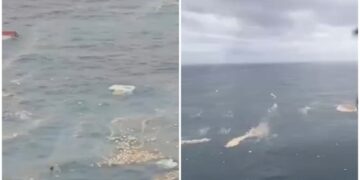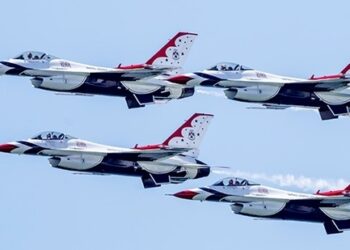Taiwan, which China regards as a part of its territory, has prioritized the indigenous submarine program as a vital component of its extensive initiative to modernize its armed forces, particularly as Beijing regularly conducts military exercises aimed at asserting its sovereignty.
The unveiling ceremony was presided over by President Tsai Ing-wen, who initiated the project upon taking office in 2016. The event took place in the southern city of Kaohsiung.
“In the past, the development of a domestically built submarine was considered an insurmountable challenge. But today, we witness a submarine designed and manufactured by the people of our country,” President Tsai declared. She emphasized the submarine’s role in enhancing the navy’s capabilities for “asymmetric warfare.”
“Regardless of the risks or the number of challenges we face, Taiwan must take this step and nurture a self-reliant national defence policy on our land,” Tsai asserted. She stood before the submarine, named the “Narwhal,” with Taiwan’s red flag, depicting a white sun against a blue sky, adorning the vessel’s bow.
The “Narwhal” is anticipated to become operational in 2025, joining the two submarines purchased from the Netherlands in the 1980s.
In response to questions regarding the submarine’s potential to prevent China from surrounding Taiwan, China’s defence ministry criticized Taiwan for overestimating itself and attempting to the unattainable. Spokesman Wu Qian referred to such discussions as “idiotic nonsense” during a monthly press briefing in Beijing.
The indigenous submarine program has benefited from expertise and technology sourced from various countries, serving as a diplomatic breakthrough for Taiwan, which is diplomatically isolated.
Cheng Wen-lon, head of Taiwan’s CSBC Corp, the company leading the submarine’s construction, mentioned that approximately 40% of the vessel’s content was domestic. However, he did not explicitly acknowledge foreign involvement during his speech in Kaohsiung.
Sandra Oudkirk, the de facto U.S. ambassador to Taiwan, was present at the ceremony, underscoring the United States’ substantial security partnership with Taiwan, despite the absence of formal diplomatic relations. The United States serves as Taiwan’s primary arms supplier.
Taiwan’s Foreign Minister Joseph Wu emphasized the need to strengthen defence measures amid heightened military pressures and “grey zone” tactics employed by China near the island. Wu endorsed the submarine program as an essential component of Taiwan’s deterrence strategy to prevent conflict.
Taiwan aims to deploy at least two domestically developed submarines by 2027, with the possibility of outfitting later models with missiles, as indicated by the program’s director earlier this month.
The first submarine, valued at T$49.36 billion ($1.53 billion), features a combat system provided by Lockheed Martin Corp and will carry U.S.-made Mark 48 heavyweight torpedoes. It is scheduled to commence sea trials next month and is slated for delivery to the Navy by the end of 2024.
Admiral Huang Shu-Kuang, Tsai’s security adviser overseeing the program, has characterized the submarines as a “strategic deterrent” capable of safeguarding Taiwan’s vital connections to the Pacific by ensuring the accessibility of ports along the island’s eastern coast.








 India
India












